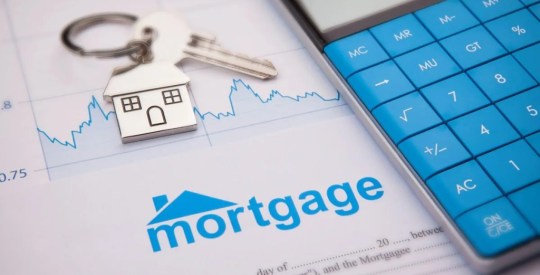The Government National Mortgage Association (GNMA, or “Ginnie Mae”) has announced new restrictions on the eligibility of Home Equity Conversion Mortgage (HECM)-backed Securities (HMBS) for adjustable rate loans operating off of the London Interbank Offered Rate (LIBOR) index, effective for all HMBS issuances dated on or after January 1, 2021, nearly a year ahead of the planned sunset of the index. This is according to a new GNMA memorandum published on Monday morning.
“Effective with HMBS issuances dated on or after January 1, 2021, Ginnie Mae will restrict the eligibility of adjustable rate Home Equity Conversion Mortgage loans for securitization into any HMBS pool type that relies on LIBOR, including pool types ‘C AL’ and ‘C ML,’” the memorandum reads. “LIBOR-Based adjustable rate HECM loans that are not securitized as of January 1, 2021, will be ineligible for pooling without regard to their date of origination or the date in which the corresponding FHA case number was assigned.”
Reverse mortgage loans backed by LIBOR-indexed HMBS will not be subject to additional restrictions through December 1, the memo reads.
“Participations associated with a HECM loan that is backing HMBS with an issuance date on or before December 1, 2020, will continue to be eligible for securitization without restriction until further notice,” the memo states.
To account for these changes, chapter 26 and chapter 35 of GNMA’s MBS Guide have been updated based on the new guidance. The memo makes no mention of a potential replacement index for LIBOR, though adjustable-rate reverse mortgages backed by the Constant Maturity Treasury (CMT) rate will be unaffected by this change, according to chapter 35 of the MBS Guide.
The new GNMA guidance is significant for the reverse mortgage industry due to its reliance on the LIBOR index, and appears to accelerate the timetable for the industry’s transition to a new rate index by nearly a year. The sunset of LIBOR is scheduled to take place at the end of 2021.
Industry response
Previously, action related to a new rate index for reverse mortgages was tied to the December, 2021 sunset of the LIBOR index. The announcement issued Monday morning caught many by surprise, including issuer members at the National Reverse Mortgage Lenders Association (NRMLA) according to association President Steve Irwin.
“NRMLA and its issuer members are a bit surprised by today’s announcement by GNMA,” Irwin told RMD in an email on Monday morning. “We will continue our efforts with ARRC and ICE to try and transition the HECM market to a more broadly accepted index.”
Previously, members of NRMLA’s Ginnie Mae Issuer Committee detailed that the association was in conversation with the appropriate decision-makers, including ARRC, Ginnie Mae and HUD about what index reverse mortgages would operate from in the future.
“Ginnie Mae and ARRC understand first that the industry requires a publicly available, widely distributed index,” said Michael McCully, partner at New View Advisors to RMD in August. “[They also understand that] the new reference index must address multiple maturities. […] Nearly 17 months is sufficient time to transition away from LIBOR to its successful replacement.”
Recent history
After international investigations determined that LIBOR was vulnerable to widespread manipulation efforts identified between 2003 and 2012, global regulators started more actively advising financial institutions to move away from the LIBOR standard, preferably by 2021. In 2014, the Federal Reserve Bank of New York first convened ARRC to identify best practices for alternative rates, and to develop an implementation plan.
In mid-2019, Ginnie Mae SVP in the Office of the President Michael Drayne told reverse mortgage industry participants that the timing of determining a new rate index was complicated by the inherent complexity of the issue.
“We’re looking at this, HUD is looking at this, and we’re all participating in the industry working group convened by the Federal Reserve ARRC,” Drayne told attendees at the NRMLA Eastern Regional Meeting in May 2019. “The amount of time we have to figure everything out is less reassuring the more you look at how complicated this problem is. We at Ginnie Mae have indirect exposure to this issue. In the end, on the government side, it’s up to the Secretary of Housing to determine what the main rate is going to be.”
Two replacement rates are possible: either the Secured Overnight Financing Rate (SOFR), or the CMT rate. Using the CMT would potentially present issues for the reverse mortgage industry, McCully told RMD in August. While SOFR is the “likely” replacement index he said at the time, that’s not to say that the concerns the reverse mortgage industry maintains about the CMT index being chosen are gone.
“Replacing LIBOR with CMT remains a concern for the industry. It is too soon to know what HECM’s replacement index for LIBOR will be,” McCully previously said.
The production of new HMBS totaled approximately $859 million in August, marking a “banner month” as HMBS issuers continued to see pronounced new production totals according to publicly available Ginnie Mae data and private sources compiled by New View Advisors.
Read the GNMA memo announcing the change.



